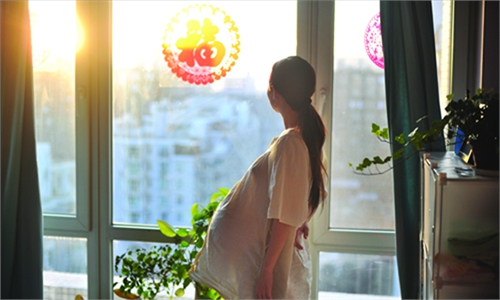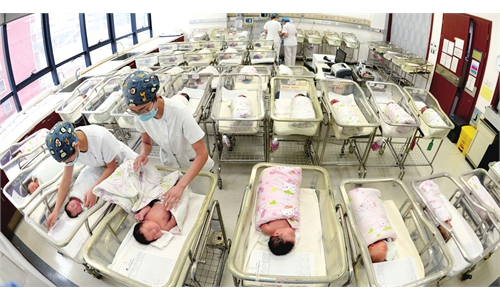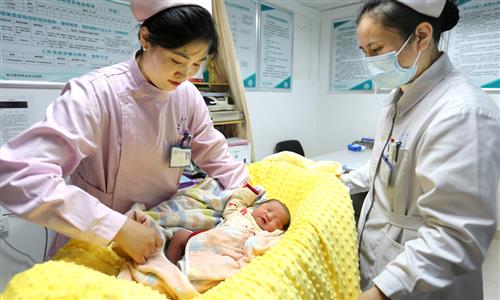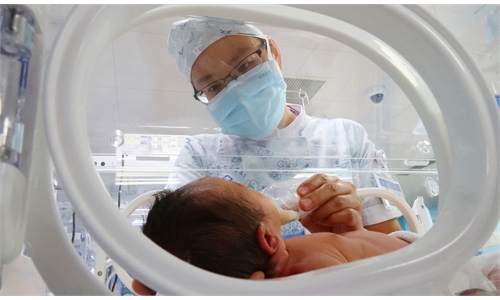China vows to improve treatment for critically ill pregnant and postpartum females as proportion of women of advanced maternal age increases
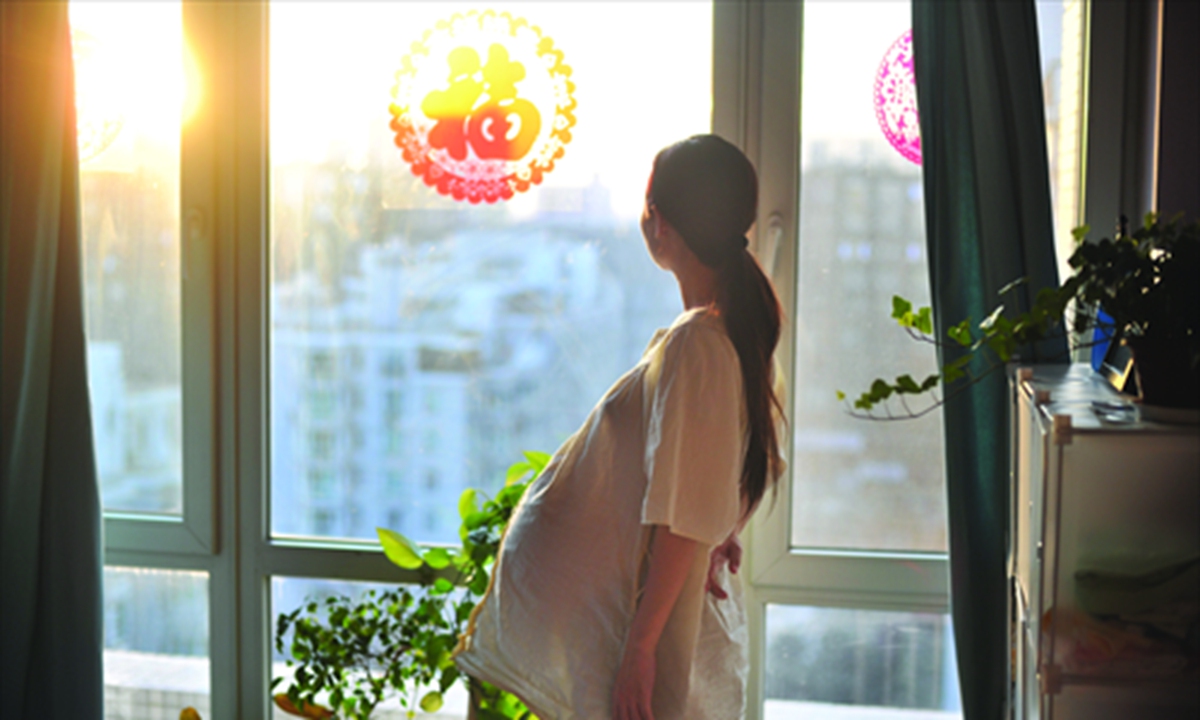
Pregnant women and their partners at a childbirth class. Photos: CFP and IC
China's National Health Commission (NHC) has urged medical institutions to improve their ability to treat critically ill pregnant and postpartum women as the proportion of women of advanced maternal age for fertility and pregnancy has been increasing in recent years.
With the postponement of the childbearing age among Chinese women and the introduction of the three-child policy in China, the proportion of women of advanced paternal age on fertility and pregnancy in China has been on the rise in recent years, Shen Haiping, a deputy director of the Maternal and Child Health Department of the NHC, said during a press briefing on Tuesday.
The birth rate in China has been declining in recent years, with only 9.02 million babies born in 2023, down from the peak of 17.86 million in 2016. The declining number of newborns and the subsequent decline in demand will lead to the contraction in obstetrics services. Since the beginning of this year, many hospitals across China have stopped providing newborn delivery services.
However, experts have noted that in the Year of the Dragon in 2024, a year traditionally associated with an increase in birth rate due to cultural beliefs, and with the government’s ongoing efforts to improve fertility support measures which are expected to encourage people to have larger families, it is expected that the number of newborns in China will see a slight increase.
The medical institutions are urged to implement related measures to ensure maternal and child health safety, conduct risk assessments for women in pregnancy, parturition and lying-in period, categorize and manage them according to corresponding risk levels, tighten management on high-risk pregnant women, and enhance the treatment of critical and severe cases.
The top health authority will soon issue a document on strengthening childbirth service management, which will put forward clear requirements on standardizing the planning, layout and resource adjustment of childbirth services, to ensure the safety and convenience of childbirth for women.
According to the NHC, a total of 3,491 critical maternal and obstetric care centers and 3,321 critical neonatal care centers have been established nationwide, basically forming a system for the treatment of critical maternal and obstetric cases and newborns. The system features extensive coverage, hierarchical responsibility, coordinated efforts, and orderly response.
This year, a comprehensive evaluation of the rescue and treatment system will be carried out to improve the capability of treating critical cases.
Besides, the construction of maternity-friendly hospitals will be initiated to improve the comfort and satisfaction of pregnant women during hospitalization for delivery, and improve their childbirth experience.
According to the NHC, the maternal mortality rate in 2023 was 15.1 in every 100,000 childbirths, the infant mortality rate was 4.5 in every 1,000 newborns, the mortality rate for children under 5 years old was 6.2 in every 1,000 children. These figures dropped by 10.7 percent, 16.7 percent and 17.3 percent, respectively when compared with the figures in 2020.
Both the infant mortality rate and the mortality rate for children under 5 years old have met the targets set in China's 14th Five-Year Plan (2021-25) for national health ahead of schedule.
Global Times
